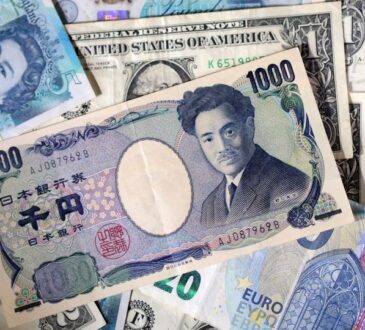
The price of gold has outperformed fiat (paper) currencies and major world stock indices from the end of 1999 to the present. This impressive performance has accelerated thus far in 2025, though the prices of silver, platinum, and palladium have topped gold’s results year-to-date through October 28.
The table below shows how the other precious metals, select world stock indices, significant world currencies, and the retail selling prices of a few generic US numismatic coins have performed versus an ounce of gold from December 31, 2024, through October 28, 2025:
Asset Change versus an ounce of gold 12/31/2024 to 10/28/2025
Example: On December 31, 2024, the spot price of gold in euros was 2,539.41. On October 28, 2025, the spot price of gold in euros at the COMEX close was 3,401.21, meaning one euro had declined from 0.00039379 to 0.00029401 of an ounce of gold, down -25.3% versus gold. Currencies in bold are components of the US Dollar Index. Note that the stock indices perform slightly better than listed when you add dividends received.
Last column’s numismatic trivia question
Last time I asked—Why does the eagle depicted on the reverse of modern $1.00 Federal Reserve Notes have nine tail feathers when adult bald and golden eagles have twelve tail feathers? The depiction of the eagle on the reverse of modern $1.00 Federal Reserve Notes is part of the artwork of the Great Seal of the United States. The symbolism of the Great Seal we outlined by Charles Thomson in 1782, who was then serving as the Secretary of the Continental Congress. The head of the eagle symbolizes the president as head of the executive branch of the federal government. The top of the shield on the eagle’s breast represents Congress and the legislative branch. The eagle’s feathers represent the judiciary branch. I could not find any explanation as to why this artwork shows the anatomically incorrect nine-tailed feathers. Some suggest that it represents the nine members of the Supreme Court. However, the US Supreme Court originally had six members and has consistently had nine members only since 1869.
This week’s trivia question
Here is this week’s question. What was a major reason for the 1807 change in the reverse design of the US Half Dollar? Come back next week for the answer.
Patrick A. Heller was honored as a 2019 FUN Numismatic Ambassador. He is also the recipient of the American Numismatic Association 2018 Glenn Smedley Memorial Service Award, the 2017 Exemplary Service Award, the 2012 Harry Forman National Dealer of the Year Award, and the 2008 Presidential Award. Over the years, he has also been honored by the Numismatic Literary Guild, Professional Numismatists Guild, National Coin & Bullion Association, and the Michigan State Numismatic Society. He is the communications officer of Liberty Coin Service in Lansing, Michigan, and writes “Liberty’s Outlook,” a monthly newsletter on rare coins and precious metals subjects. He now volunteers with the National Coin & Bullion Association as its Industry Issues Advisor. Past newsletter issues can be viewed at www.libertycoinservice.com. Some of his radio commentaries, “Things You ‘Know’ That Just Aren’t So,” and “Important News You Need To Know,” can be heard at 8:45 a.m. Wednesday and Friday mornings on 1320-AM WILS in Lansing (which streams live and becomes part of the audio archives posted at www.1320wils.com).



